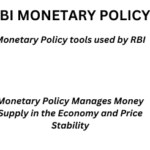Single-Use Plastic Ban from July 1: Basics Explained

India will ban the manufacture, import, stocking, distribution, sale, and use of identified single-use plastic items, which have low utility and high littering potential, all across the country from July 1, 2022. The ban will prevent its harmful effects on the environment(marine environments as well as terrestrial ecosystems). Single-use plastic is those items that are used only once and discarded.
The list of banned items includes –earbuds with plastic sticks, plastic sticks for balloons, plastic flags, candy sticks, ice-cream sticks, polystyrene (Thermocol) for decoration, plastic plates, cups, glasses, cutlery such as forks, spoons, knives, straw, trays, wrapping or packing films around sweet boxes, invitation cards, cigarette packets, plastic or PVC banners less than 100 micron, stirrers.
.
The Plastic Waste Management Amendment Rules, 2021, also prohibit the manufacture, import, stocking, distribution, sale and use of plastic carry bags having a thickness less than 75 microns with effect from 30th September 2021, and having a thickness less than of 120 microns with effect from the 31st December 2022.
The Ministry of Environment, Forest, and Climate Change has also notified the Guidelines on Extended Producers Responsibility on plastic packaging as Plastic Waste Management Amendment Rules, 2022 on 16th February 2022. Extended Producer Responsibility (EPR) is the responsibility of a producer for the environmentally sound management of the product until the end of its life. The Guidelines will provide a framework to strengthen the circular economy of plastic packaging waste, promote the development of new alternatives to plastic packaging and provide next steps for moving towards sustainable plastic packaging by businesses.
Types of plastic waste
Polyethylene Terephthalate (PETE or PET), High-Density Polyethylene (HDPE), Polyvinyl Chloride (PVC), Low-Density Polyethylene (LDPE), Polypropylene (PP), Polystyrene or Styrofoam (PS) are the different types of plastics.
LEARNING FROM HOME/WITHOUT CLASSES/BASICS
Since plastics belong to a chemical family of high polymers, they are essentially made up of a long chain of molecules containing repeated units of carbon atoms. Because of this inherent molecular stability (high molecular weight), plastics do not easily break down into simpler components.
Due to the non-biodegradable nature of plastic, it is quite dangerous to make our environment polluted with plastics as it will not break down into simpler compounds and get absorbed into the air-water or soil.
It will eventually photo-degrade, i.e. break down into smaller and smaller fragments by exposure to the sun. The photo-degradation process continues down to the molecular level, yet photo-degraded plastic remains a polymer. No matter how small the pieces, they are still and always will be plastic, i.e. they are not absorbed into or changed by natural processes. Plastic becomes microscopic, invisible, yet ever polluting waters, beaches, coasts, seafloor, being eaten by even tinier marine organisms, therefore entering the food chain insidiously and ineluctably.
Toxic chemicals leach out of plastic (bisphenol-A or BPA,phthalates.) and are found in the blood and tissue of nearly all of us. Exposure to them is linked to cancers, birth defects, impaired immunity, endocrine disruption and other ailments.
Plastic is a petroleum product; to truly divest from fossil fuels, we must reduce our collective plastic footprint. More and more awareness and prevention programs need to be promoted which should ultimately lead us toward better choices in term of consumption and waste management of plastic at an individual level.






0 Comments